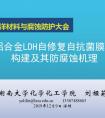杨卫,中国科学院院士。1954年生于北京市,祖籍湖南浏阳,1969年1月参加工作,1976年5月加入中国共产党。1976年毕业于西北工业大学,1981年在清华大学获硕士学位,1985年在美国布朗大学获博士学位,固体力学专家,教授,2003年当选中国科学院院士,2006年8月起任浙江大学校长至今。长期从事宏微观断裂力学、细观与纳米力学、力电耦合失效等领域的研究。出版了一系列论著。其中《细观塑性力学及其应用》和《力电失效学:电致失效,力电耦合,区位转换,质流失稳》为Springer出版社出版。在断裂力学研究中,得到准三维裂纹尖端场的解析解,证明界面裂纹扩展可能超越下瑞利波,激发了超高速界面断裂的研究。在细观与纳观力学研究中提出细观塑性理论。发展了连续介质力学与分子动力学之间的跨层次算法,并模拟了从裂尖发射的原子点阵位错运行转变为连续介质位错群的现象。提出准解理断裂理论,解释了裂纹钝化后再出现解理的现象。提出电致断裂的非线性力学机理模型、畴变增韧模型以及畴变电致疲劳模型,可用于计算电场循环的裂纹扩展量,提出电致质流失稳模型。

纳米晶体与石墨烯的断裂
杨卫/ 浙江大学
利用原位拉伸手段,我们系统研究了二维纳晶金属薄膜和石墨烯的断裂和变形行为。对纳晶金属薄膜的断裂过程原位实验研究揭示了原子迁移在其中的重要作用,裂纹扩展通过原子台阶的不断形成和迁移,其驱动力由裂尖应变能提供。实验发现裂尖钝化形成的楔形结构由晶粒取向决定,楔角的大小决定了裂纹扩展的难易程度。在特定晶界结构下,裂纹会发生向晶内扩展的情况。在对纳米金薄膜变形机制研究中,发现拉伸过程中形成金纳米条带的变形机制与晶体取向有密切关系。<001>方向拉伸过程中,滑移是主要的形变机制; <110>方向上的拉伸过程中,形变孪晶主导了金纳米条带的塑性形变;<112>方向上的拉伸过程中观察到了原子台阶沿表面迁移造成的层层剥落方式的断裂机制。对石墨烯断裂的原位实验研究揭示应变集中在裂尖几个原子的尺度内,C-C键沿Zigzag边界上依次断裂。在断裂过程中,没有看到扩展的缺陷,如5-7结构,表明石墨烯的脆性断裂特点。
A Pre-cracked Parallel-plate capacitor Model for Fracture of a Dielectric Material under Mechanical and/or Electric Loading
Tong-Yi Zhang and Tao Xie
Department of Mechanical Engineering, Hong Kong University of Science and Technology
A pre-cracked parallel-plate capacitor model is developed in the present work to study the effect of electrostatic tractions on the fracture behavior of a dielectric material under mechanical and/or electric loading. The capacitor is made of isotropic dielectric material with rigid electrodes coherently bonded on the capacitor surfaces and the crack interior is air or vacuum. The mechanical and electric loading is implemented by applying mechanical displacement and electric voltage. This ideal model allows us to study analytically electrostatic tractions, deformation, and energy release rate. The analysis indicates that electrostatic tractions on the electrodes compress the material in front of the crack tip, while electrostatic tractions on the crack faces have the tendency to close the crack and stretch the material behind the crack tip. As a result, there exists a threshold of applied mechanical load to open the crack and the threshold mechanical load increases with the increase of applied electric field. An applied electric field impedes crack propagation, whereas applied mechanical load tends to propagate the crack. The applied electric field will play a more significant role in the fracture behavior, if the dielectric constant is higher and/or the mechanical fracture toughness of the material in terms of the critical energy release rate is lower.
-
标签: 第十六届全国疲劳与断裂大会, 杨卫

官方微信
《中国腐蚀与防护网电子期刊》征订启事
- 投稿联系:编辑部
- 电话:010-62313558-806
- 邮箱:fsfhzy666@163.com
- 中国腐蚀与防护网官方QQ群:140808414




